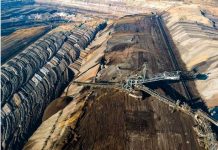Two catalysts just ratcheted up investor interest in west coast LNG—Liquefied Natural Gas.
One was the re-election of the centre-right Liberal party in British Columbia in May. The second catalyst came in mid-June, when Malaysia’s Petronas announced it wants to spend $16 billion—as fast as government approvals will allow—to ship LNG to Asia.
Newswires are full of LNG talk, and it’s great to see excitement running high. The stocks of some of the service companies that will receive a piece of those billions of dollars—drillers, frackers, construction companies—are already starting to run.
But what’s the reality? There needs to be a lot of consensus building and government approvals before the infrastructure building begins. The first LNG shipment off Canada’s west coast is now forecast to be 2015, but that’s from the smallest proposed facility. The next one isn’t set to start up until 2018—and a lot can happen between now and then.
Great strides have been taken, but some key questions remain completely unanswered—When will any of the big consortiums actually ink a supply deal, and at what price?
So with a focus on reality, I updated the development status of today’s key LNG projects…
Let me first give you a context for the many numbers I’ll be talking about below.
At the start of 2013, the world’s LNG facilities could produce 290 million tonnes per annum (mtpa), or 38.6 billion cubic feet of gas per day (very roughly, 1 bcfpd=7.5 mtpa)—just enough to meet global demand of 250 mtpa, or 33.3 bcfpd.
As background, the US right now is producing 65 bcfpd—so all the LNG in the world today would meet half the US daily requirements—so it’s still small. But that is a four-fold increase in 20 years…and demand forecasts from here continue in just one direction: up.
What’s more, the International Energy Agency (IEA) predicts LNG demand could double by 2030.
Whether the world will have enough LNG facilities to meet that demand remains to be seen. A staggering 480 mtpa (64 bcfpd) of new capacity has been proposed, but most of that will never make it off the page.
Australia leads the pack in terms of facilities already under construction: the Land Down Under is now producing 2.5 bcfpd, but seven onshore and five floating centers will boost output to 15 bcfpd by 2018. That ramp-up will push Australia past Qatar into top spot in the global LNG producers list.
But the achievement is coming at a cost. Development costs have ballooned on many projects, propelled upwards by a strong Australian dollar and high labour and material costs. For example, the price tag to build the Gorgon LNG project has climbed from $39 billion to $52 billion – and the project is still 18 months from completion.
Gorgon is a large LNG project – it will produce 15.6 mtpa (just over 2 bcfpd) – but almost every LNG facility is a multi-billion dollar dream. To access that kind of capital, would-be LNG producers have to lock down buyers—they have to ink offtake deals with set pricing for most of their product to assure lenders that the billions loaned to build the plant will be repaid.
Of course, producers want high prices, buyers want low prices…and that’s where the story sits today. Asia consumes three-quarters of the world’s LNG and strong demand has pushed Asian prices way up. Asian buyers are sick of it – they want to pay reasonable rates and, knowing that a flood of LNG is coming, they are waiting as long as possible to sign on for new supply.
Their patience is developers’ pain. Almost a dozen consortiums are vying to build LNG facilities on BC’s coast but only one – the smallest by far – has locked in a buyer for a significant proportion of its production. That means all the rest are still facing the huge hurdles of securing LNG buyers and finding project financing.
The 4 Main Players in British Columbia, Canada’s West Coast
The field of BC LNG players includes several of the world’s biggest energy companies, a handful of mega national energy firms, and the biggest LNG buyers in the world, all in a race with each other and with similar projects around the world.
Of the nine LNG facilities proposed for BC’s West Coast, four are much more advanced than the rest.
- Douglas Channel LNG
| Who: | Haisla First Nation LNG Partners Golar LNG |
First shipment: | 2015 | |
| NEB approval? | Yes | |||
| Where: | Kitimat | Environmental approval? | Not applicable | |
| Size: | 0.7 mtpa or 0.09 bcf/d | Contracted buyer? | Golar and LNG Partners |
The smallest and most advanced LNG project, Douglas Channel, differs from the rest of the LNG pack in not involving a major energy company. Instead, the project is a partnership between the Haisla First Nation and LNG Partners, a private Texan energy fund that funds First Nation’s participation in projects.
The project is planned for the west bank of Douglas Channel, within the District of Kitimat and on land controlled by the Haisla First Nation.
The Douglas Channel project is small enough that is doesn’t have to go through the environmental assessment process. The operation would produce just 0.7 mtpa or 0.09 bcfpd – and the project boasts a secure buyer for that output. Golar LNG, one of the world’s largest independent operators of LNG carriers, and LNG Partners will buy all of Douglas Channel’s product.
Golar, along with an as-yet unnamed Asian investor, also bought a 25% stake in the project for an undisclosed sum—so they’re not just the LNG shipper. The new project partners will also provide the $500 million needed to get the project built and into operation.
The project has a National Energy Board (NEB) export license and expects to be in service by 2015. Gas will flow to the facility through the existing Pacific Northern Gas pipeline. The ducks are all lined up on this one and a final investment decision is expected within a few months.
- Kitimat LNG
| Who: | Chevron Apache |
First shipment: | 2018 | |
| NEB approval? | Yes | |||
| Where: | Kitimat | Environmental approval? | Achieved | |
| Size: | 5 mtpa or 0.75 bcf/d | Contracted buyer? | No |
The second-smallest and second-most-advanced LNG proposal, Kitimat LNG, is backed by energy giant Chevron and oil and gas major Apache. They want to build a 5-mtpa or 0.75-bcfpd facility to process gas from their joint shale gas properties in the Horn River and Liard Basins up near the Yukon border.
In fact, the entire process will be a joint venture, from producing the gas to piping it to the coast and liquefying it. The project has NEB approval, as well as an environmental green light from the BC and federal governments.
Also approved: a 463-km long connecting Kitimat to the Spectra Energy gas transmission system near Summit Lake. And the existing transmission line serving Kitimat would suffice to power the project.
All that’s needed now is a final investment decision. That may depend on locking in a buyer, something this project has not yet managed. Chevron has said if it doesn’t get oil-linked pricing, it will likely not proceed.
- LNG Canada
| Who: | Royal Dutch Shell Korea Gas Mitsubishi PetroChina |
First shipment: | Unknown | |
| NEB approval? | Yes | |||
| Where: | Kitimat | Environmental approval? | Just started process | |
| Size: | 37 mtpa or 5 bcf/d | Contracted buyer? | No |
LNG Canada is at the other end of the LNG spectrum: it’s big and it’s being advanced by an almost ridiculous list of energy and LNG giants.
Partnering on the project are Royal Dutch Shell, Korea Gas, Mitsubishi, and PetroChina – in other words, an energy giant and leading LNG producer, the world’s largest LNG importer, Japan’s leading LNG importer, and China’s largest oil and gas producer.
The partners want to build a liquefaction facility and loadout terminal in Kitimat. At maximum capacity the facility would produce 37 mtpa or 5 bcfpd and the terminal would accommodate two LNG carriers. It’s the largest proposed facility to date.
It’s big enough to require some big infrastructure, including a bigger power line from Prince George in central B.C. to Terrace near the coast—AND a new pipeline. TransCanada (TRP-TSX/NYSE) has signed on to build that pipeline, a 48-inch, 650-km project running from the shale fields of northeastern BC to Kitimat. Neither the powerline nor the pipeline has entered the environmental assessment process.
The LNG facility itself has started that process, recently submitting a Project Description to the Canadian Environmental Assessment Agency (CEAA) and the BC Environmental Assessment Office (BC EAO). The assessment process usually takes about two years.
The NEB already granted the project approval. No suppliers have signed on to buy LNG Canada’s output, but does have a distinct advantage on that front: two of the project partners are major LNG buyers. As such, a deal will likely be made at the boardroom table.
- Pacific Northwest LNG
| Who: | Petronas Japan Petroleum |
First shipment: | Unknown | |
| NEB approval? | No | |||
| Where: | Kitimat | Environmental approval? | No | |
| Size: | 18 mtpa or 2.4 bcf/d | Contracted buyer? | No |
The main proponent behind this proposal is Malaysia’s national oil company, Petronas. Until late last year Petronas was partnered with Progress Energy on the proposal, but that ended when Petronas bought Progress for $6 billion. Shortly after the company signed Japan Petroleum Exploration on as a 10% partner, and Petronas is apparently in talks with other interested parties.
Petronas wants to build an 18 mtpa or 2.4 bcfpd liquefaction plant in Prince Rupert. The company wants to start building in late 2014, but that might be tight given that the project has not won environmental, NEB, or pipeline approval.
What it lacks in authorization Petronas is making up for in publicity. In January the company trumpeted a deal that will see TransCanada design, build, own, and operate the gas pipeline needed to feed Petronas’ plant.
Then in mid-June, a few weeks after the pro-LNG Liberal Party returned to power in BC, Petronas outlined its spending plans: the company expects to drop between $9 and $11 billion on the LNG facility, plus $5 billion on the pipeline and “several billion more” on upstream operations.
Petronas has not locked down a supply deal, though Japex’s arrival as a 10% partner points the finger at one likely buyer.
In the end, what does it all mean? The excitement is a little ahead of reality right now—but only a little. Golar and the LNG Co-operative are looking like a sure bet to ship LNG out in 2015, and everyone is rightly enthused.
And an ocean of money is waiting to come with all the other projects. But there is a Big Dam—a long-term contract with an end user. However, two of the four other proposals have end users as part of their group, so that should only be a matter of time.
For Western Canadian service companies and gas producers, that time can’t come soon enough.








